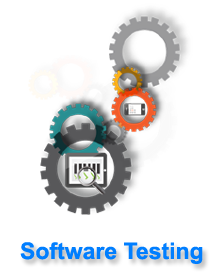What is System Testing
What is System Testing
SYSTEM TESTING is a level of testing that validates the complete and fully integrated software product. The purpose of a system test is to evaluate the end-to-end system specifications. Usually, the software is only one element of a larger computer-based system. Ultimately, the software is interfaced with other software/hardware systems. System Testing is actually a series of different tests whose sole purpose is to exercise the full computer-based system.

Types of System Testing
Usability Testing: mainly focuses on the user's ease to use the application, flexibility in handling controls and ability of the system to meet its objectives.
Load Testing: is necessary to know that a software solution will perform under real-life loads.
Regression Testing: involves testing done to make sure none of the changes made over the course of the development process have caused new bugs. It also makes sure no old bugs appear from the addition of new software modules over time.
Recovery testing: is done to demonstrate a software solution is reliable, trustworthy and can successfully recoup from possible crashes.
Migration testing: is done to ensure that the software can be moved from older system infrastructures to current system infrastructures without any issues.
Functional Testing: Also known as functional completeness testing, Functional Testing involves trying to think of any possible missing functions. Testers might make a list of additional functionalities that a product could have to improve it during functional testing.
Hardware/Software Testing: IBM refers to Hardware/Software testing as "HW/SW Testing". This is when the tester focuses his/her attention on the interactions between the hardware and software during system testing.
System Testing Process
System Testing is performed in the following steps;
- Test Environment Setup: Create testing environment for the better quality testing.
- Create Test Case: Generate test case for the testing process.
- Create Test Data: Generate the data that is to be tested.
- Execute Test Case: After the generation of the test case and the test data, test cases are executed.
- Defect Reporting: Defects in the system are detected.
- Regression Testing: It is carried out to test the side effects of the testing process.
- Log Defects: Defects are fixed in this step.
- Retest: If the test is not successful then again test is performed.

